Clear and cool weather promised to persist until Christmas. Sunrise on a cloudless sky is less than spectacular. This view from our back patio, on December 19, showed a bank of low clouds over the ocean, reminding me of the mountains we could see from our front windows when we lived in New Mexico.
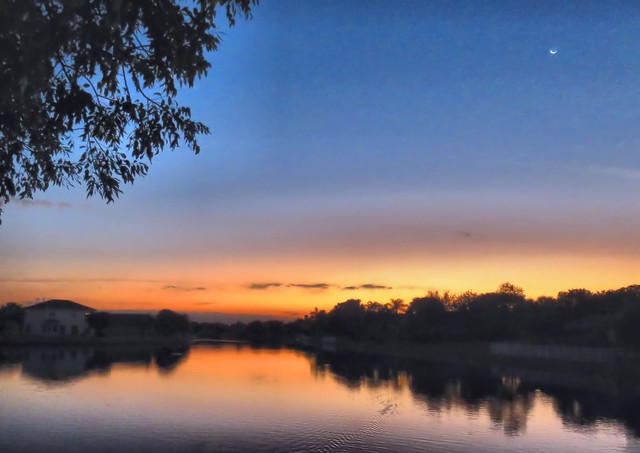
The waning crescent moon can be seen in the upper right corner of the above photo. In winter it is lit from the bottom, pointing up, a "wet moon" that traps the rain in its cup, heralding the dry season.
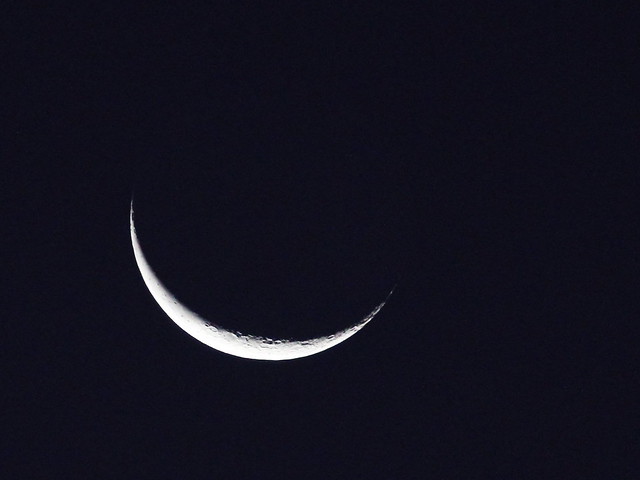
In a recent post I lamented the lack of little birds, the "dicky-birds" the few species present when the days are long, warm and wet. I define "winter" as that period between fall and spring migration, loosely from October through February. During winter we can see more of the little tykes, sparrow-sized or smaller.
Although Florida's big birds are relatively easy to find and photograph, I enjoy the challenge of capturing these evasive creatures. Some northern sparrows have now arrived, including this Savannah Sparrow, first seen on November 4:

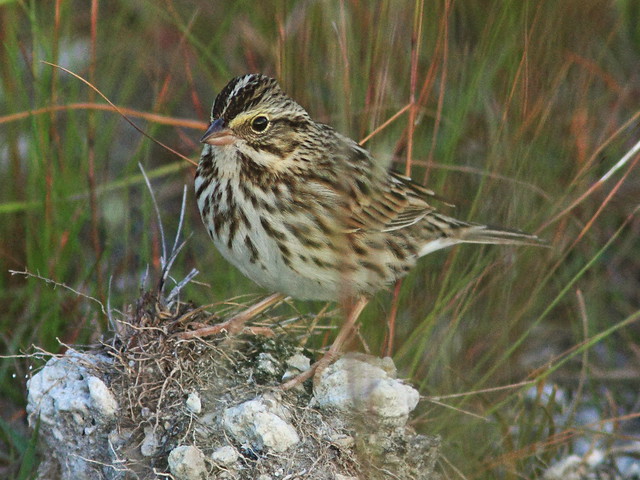
When just learning to use my first DSLR camera (the first Canon EOS Digital Rebel) I took my favorite photo of a local Savannah Sparrow back on October 31, 2008:
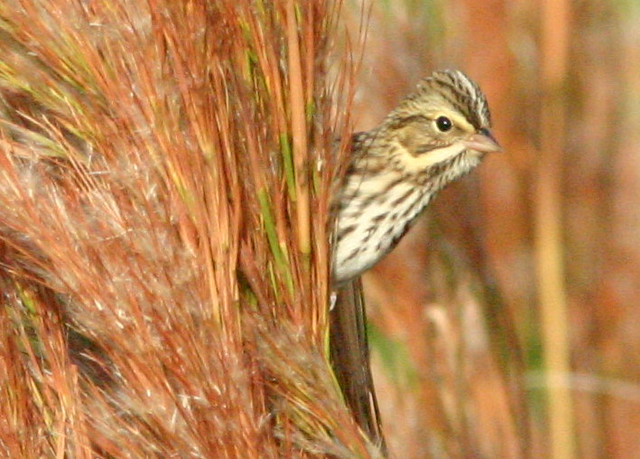
About a week later after the first Savannah Sparrow, I caught this quick glimpse of a Swamp Sparrow through the brush, on November 13:

After a few near misses, this one came out into the open on December 19:

I hope to find other winter sparrows that have appeared rather irregularly over the years, Among them, the Grasshopper Sparrow, photographed here on February 1, 2011. Loss of grassland habitat in our patch makes this species less likely to appear locally in the future:

A Lincoln's Sparrow showed up only once, on October 16, 2013:
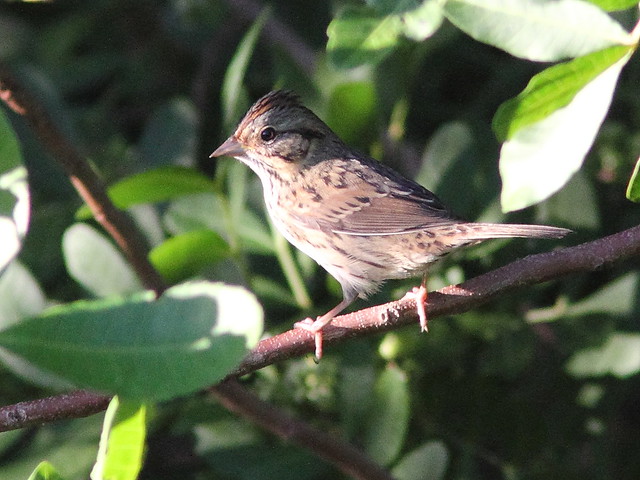
I sighted my first local White-crowned Sparrow on October 18, 2012:
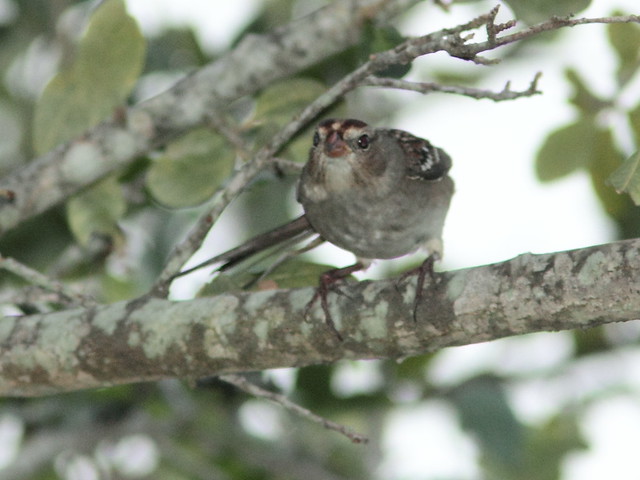
At least two White-crowned Sparrows were present the next year in the same tree, first on October 23,...
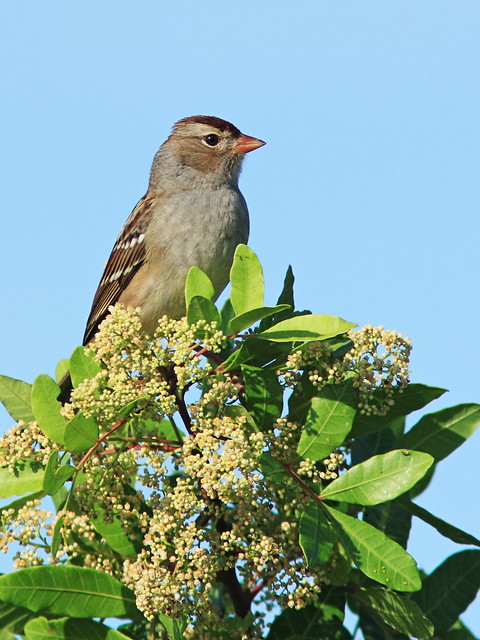
...and again on October 26, 2013:

Two visiting species of bunting qualify as "dicky-birds, less than 6 inches long. The Indigo Bunting is seen irregularly all winter. The males show very little of their summer blue plumage (November 7, 2014):
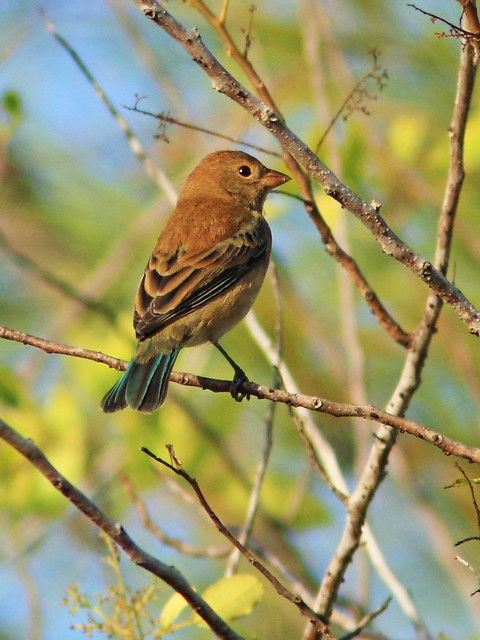
While male Painted Buntings retain their colorful plumage all year around, we see mostly green immature and female birds (this one also on November 7):

Other non-breeding migratory "dicky-birds" (sparrow-size or smaller) that stay here all winter and are relatively common include the Blue-gray Gnatcatcher (November 11, 2014).
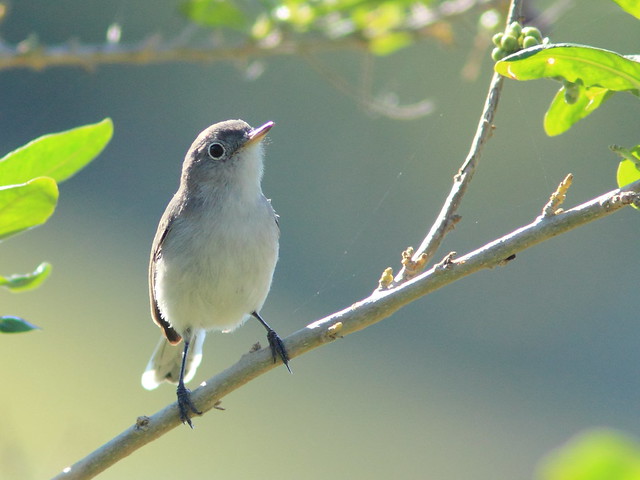
Tiny House Wrens breed widely over the northern part of the US and are fairly abundant all winter long (November 7, 2014):

A few warblers are seen only during the winter-- the Palm Warbler (December 10, 2014),...

...and Yellow-rumped Warbler, giving me an inquiring look,...

...and suspended in mid-air on November 30, 2014:

Although I have not photographed one this winter, Black-and White Warblers are fairly reliably present (October 17, 2013):
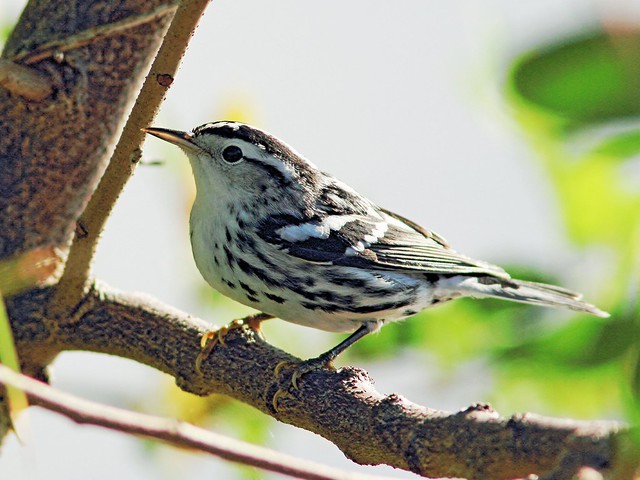
Their plumage is striking and they are amusing acrobats:
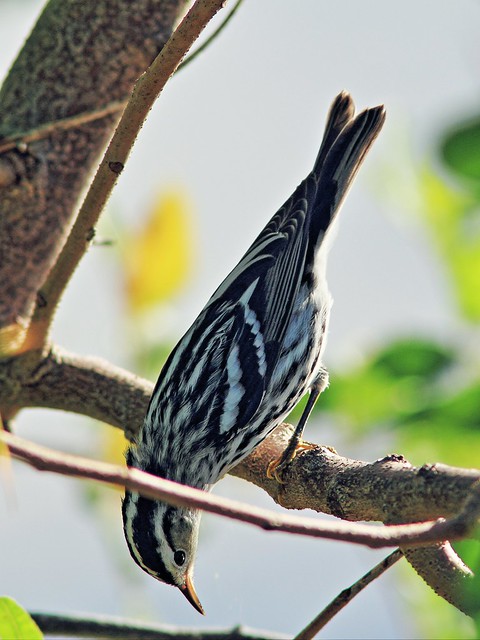
Orange-crowned Warblers, though reclusive and hard to find, are also here all winter (November 20, 2014):

Many other warbler species spend the winter nearer the coast and in richer habitats than our wounded and deteriorating local wetlands, but so far I have not found them locally except during migration.


Kenneth, that is quite a collection of birds! I love the Black and white warbler! I hope you get to see a grasshopper sparrow again. I found a couple around my brother's neighborhood in Cape coral when I was there last February!
ReplyDelete